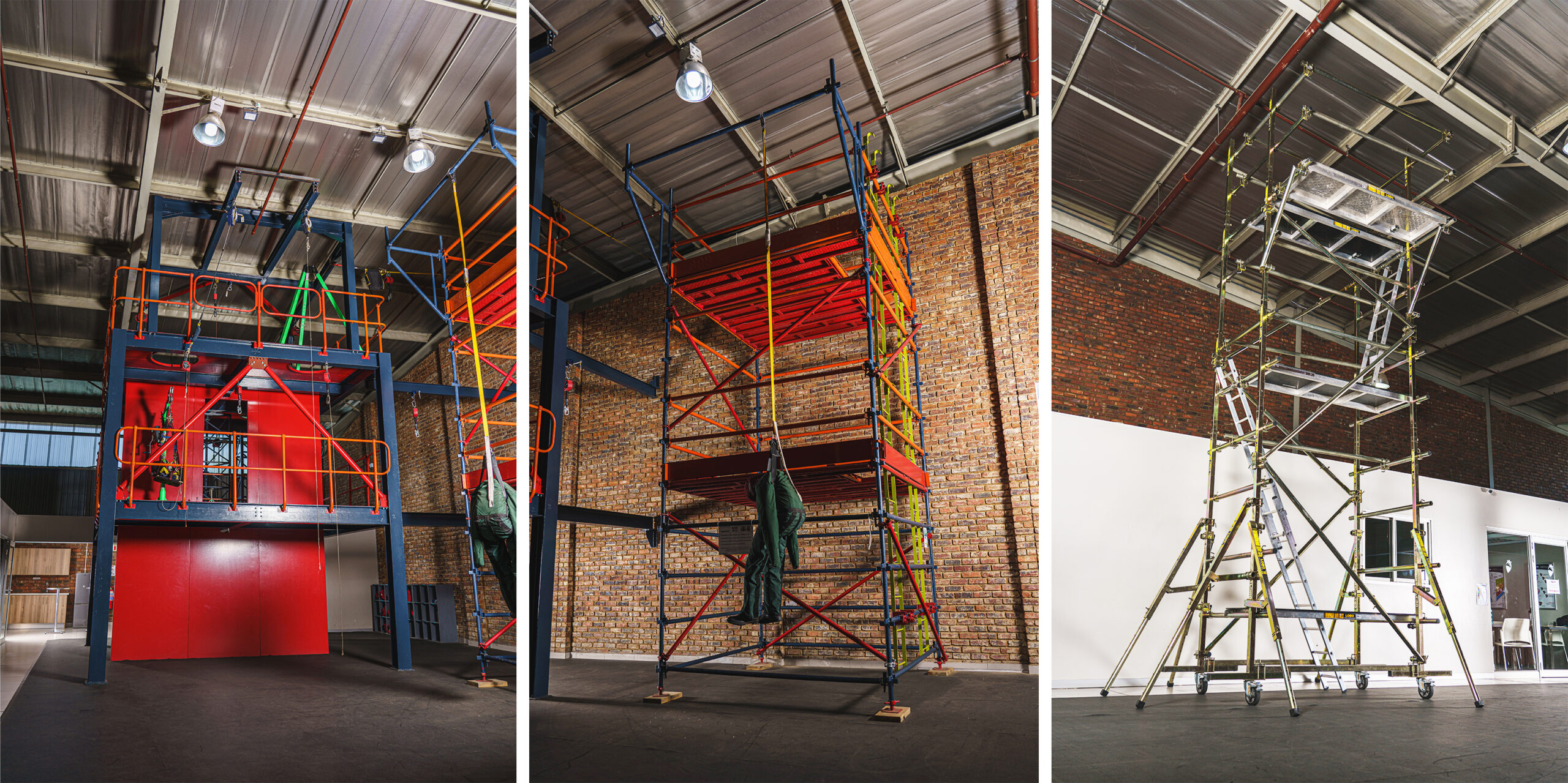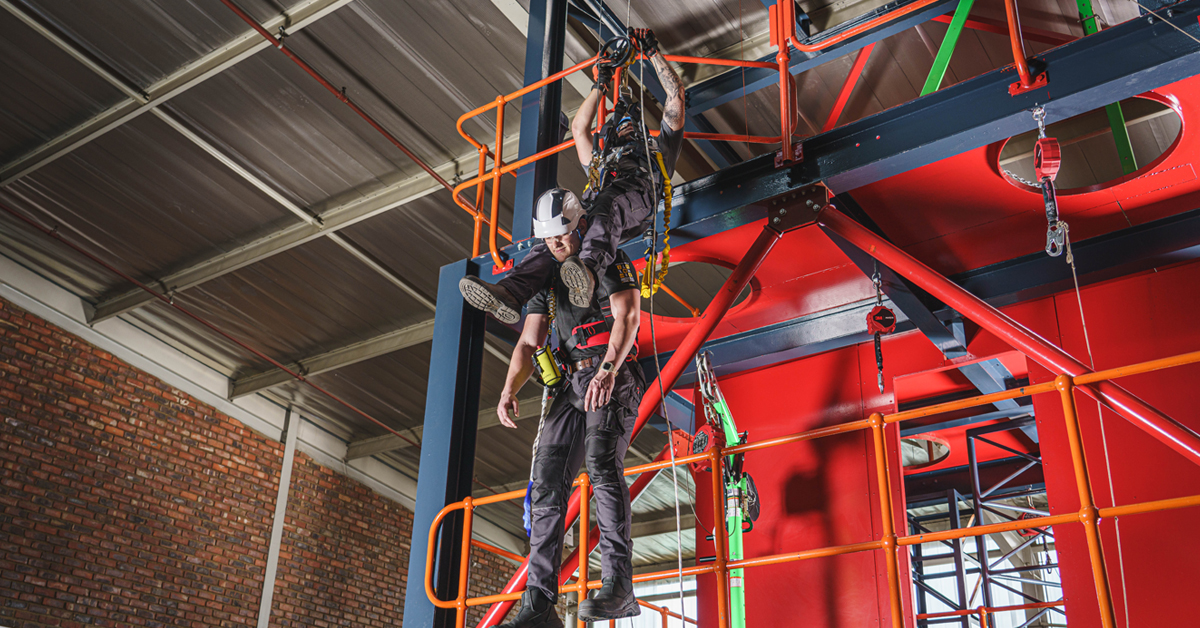Rescue, Training, Work at Heights
Work at Heights: The Importance of Efficiency in Rescues
SPEED:
When you speak about a Rescue being performed once a person has fallen, the general comment will be about time. The rule is the victim could experience Suspension Trauma anywhere from 5 minutes after a fall – which naturally means a rescue needs to be performed quickly. This is where the ‘Speed’ of the rescue is focused on.
Why SPEED should not be the main consideration:
By being quick in speed for this task there are a number of steps involved such as Setting up a Rescue System or Connecting the rescue kit to the victim. Focusing on speed in these two examples could delay the execution of the rescue. For example if you focus on quickly setting up a rescue system, you could tangle the rope and further into the process of performing the rescue it could slow you down significantly, if not make you need to restart. When connecting to the victim if you are focused on speed you could incorrectly connect to the victim or potentially miss an issue with the setup of the rescue kit due to the rush.
Efficiency is key:
There is a significant difference between speed and efficiency, even though the two could mean the same thing in certain context. In this context Efficiency means carrying out each component of the rescue with precision to ensure it is adequately setup for the next step of the rescue. In short we need to either put a massive amount of focus into each step of the rescue or have a system which removes something as elementary as having unseen twisted ropes from the process.
“MORE HASTE, LESS SPEED”
Added headache to consider:
Now keeping the above in mind there is an element which could create Panic, Stress and Fear for the person responsible for performing the rescue, apart from this being a High-Stress Activity to begin with. The point is, How long ago was the Rescue Technician trained or did they practice the rescue? This might seem silly, but if we think about how often Fall from Heights occur (Rarely) as well as how long does a certification last to perform a rescue (+-3 years in South Africa) all of a sudden you could be expecting a person, in this high stress situation, who is not prepared and possibly cannot even remember the exact steps of the rescue required to be carried out. This is a disaster waiting to happen.

Steps to avoid this:
There is a major emphasis on receiving high level training in this regard from not only a recognised training provider but also one which can ensure the appropriate rescue can be performed on your unique site (very seldom are two rescues the same). This could be anything from the type of rescue which needs to be performed (Lift Victim, Lower Victim, Traverse Victim) to the environment it is being performed in (Are there obstruction, Where will the rescuer anchor, Are there sharp edges) to the actual practicality of the rescue (Will I be able to reach the victim post fall). Once this has been completed in the beginning of the process there are two great ways to try and ensure the rescue technician has the best chance at being successful as possible. – Work at Heights training booking form
- Mock Drills – This is a very simple way to ensure the person remains comfortable in performing a rescue, should the need arise. This is a recurring allocated time (Quarterly, Monthly etc) in which the rescue person will be asked to perform a rescue in a simulated, controlled environment. Of course a controlled environment is completely different to a real situation but the skill taught here is re-enforcing the steps of a rescue being carried out which are then more likely to become a reaction through muscle memory.
- Ensure the gear which is used is SIMPLE. It really makes no sense to have an ultra-complex rescue system to make it seem great when you perform a rescue (I am certain people who sell Fall Protection Equipment love to make it seem more complex than it is, for whatever reason…). But seriously, buy a kit that without having to adjust or setup too many parts will perform the rescue and perform the goal of getting the victim to safety as quickly and easily as possible. This is currently the most easy to use system which even if you have not used in 2 years, I am certain you will be able to pick it up and perform a rescue with ease – 3M™ DBI-SALA® ROLLGLISS™ R550 ADVANCED RESCUE SYSTEM WITH RESCUE HUB)
Conclusion:
Set any person required to perform a rescue in a Fall Arrest situation up for success by following these easy steps:
- Ensure the rescue requirements are fully understood
- Get the technician appropriately trained on the EXACT rescues which they may be required to perform.
- Gear them up with the EXACT equipment they will be required to use in the rescue process.
- Perform periodic Mock Drills to ensure they are still current and able to efficiently perform the required rescue.
Practical Help on getting the above in place:
Protekta Safety Gear has a completely dedicated team of High Risk Technicians (Work at Heights and Confined Space) who can assist in ensuring the above are properly considered and support in carrying each of the steps out. Feel free to get in touch Contact Us.


